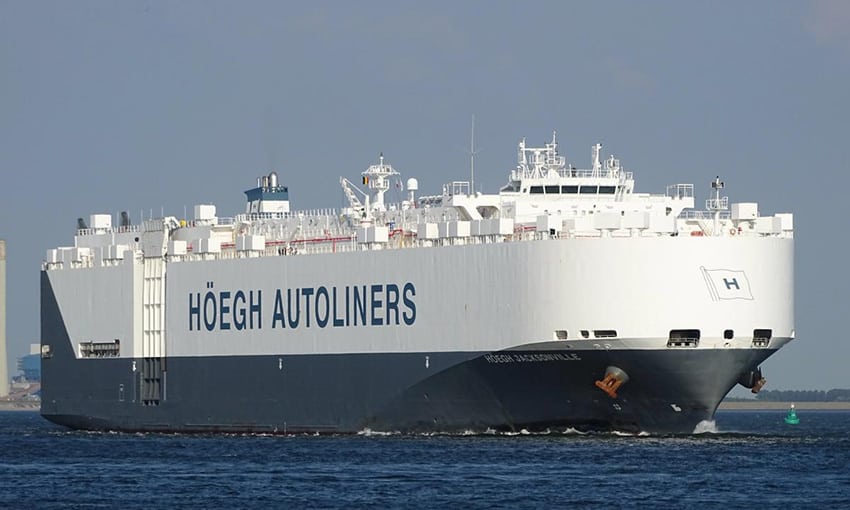HÖEGH Autoliners is selling Höegh Bangkok (IMO 931847) for US$63 million. and buying Höegh Jacksonville (IMO 9673379) for US$43.22 million.
The company built Höegh Bangkok at the Uljanik shipyard in 2007. It has a capacity of 6500 CEU and is flagged in Norway.
The company has also declared an option to purchase the vessel Höegh Jacksonville (IMO 9673379) from Ocean Yield.
Höegh Jacksonville was built in 2014 and it has a capacity of 6,500 CEU. Höegh said it was one of its best-performing vessels in terms of emissions. The company said it intends to finance the purchase price fully by mortgage debt through its fleet credit facility.
“The purchase of Höegh Jacksonville reconfirms our strategy of building long-term commitments with our customers based on a modern fleet which we own and control,” Höegh Autoliners CEO Andreas Enger said.
“The transaction is cash neutral, enables the realisation of value gains from our lease options, and will allow for better capacity cost control.”
The company said the sale of Höegh Bangkok is in line with its strategy to renew its fleet in anticipation of the first Aurora class vessel being delivered in July 2024.
The transaction is made possible because the time to delivery of the first Aurora vessels is sufficiently short to build capacity bridges to maintain the company’s service to contract customers.
Following the transactions, Höegh Autoliners will continue to operate a fleet of 36 vessels, consisting of 31 owned vessels and five under long-term BB and TC leases.
The Company said it would expand its fleet with four new Aurora multifuel vessels between July 2024 and March 2025 adding 36400 CEU of capacity and another four Aurora vessels with another 36400 CEU of capacity by mid 2026.
“The transactions represent good opportunities for us to optimise our asset portfolio in preparation for the first Aurora deliveries,” Mr Enger said.
“We will retain our focus on serving core contract customers while seeking opportunities to optimise our long-term fleet composition and capital structure.”





